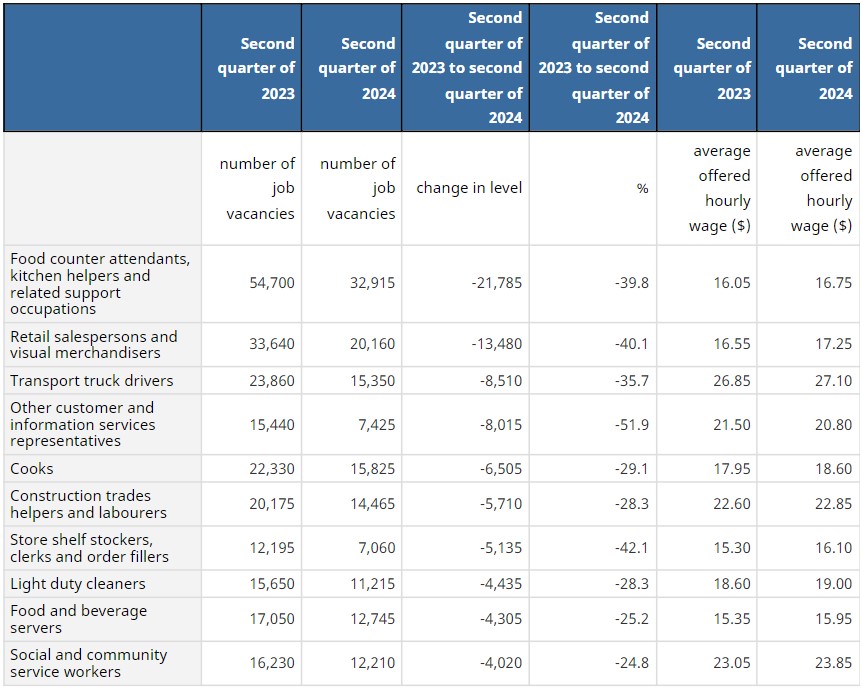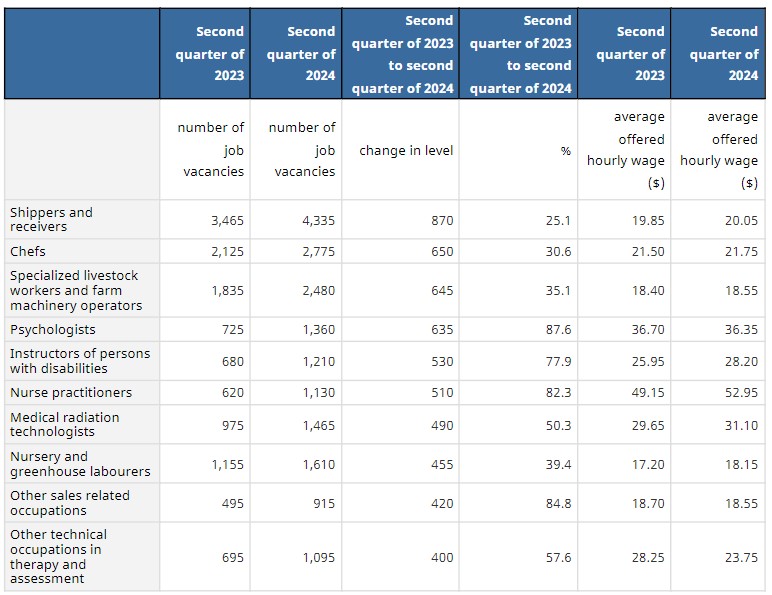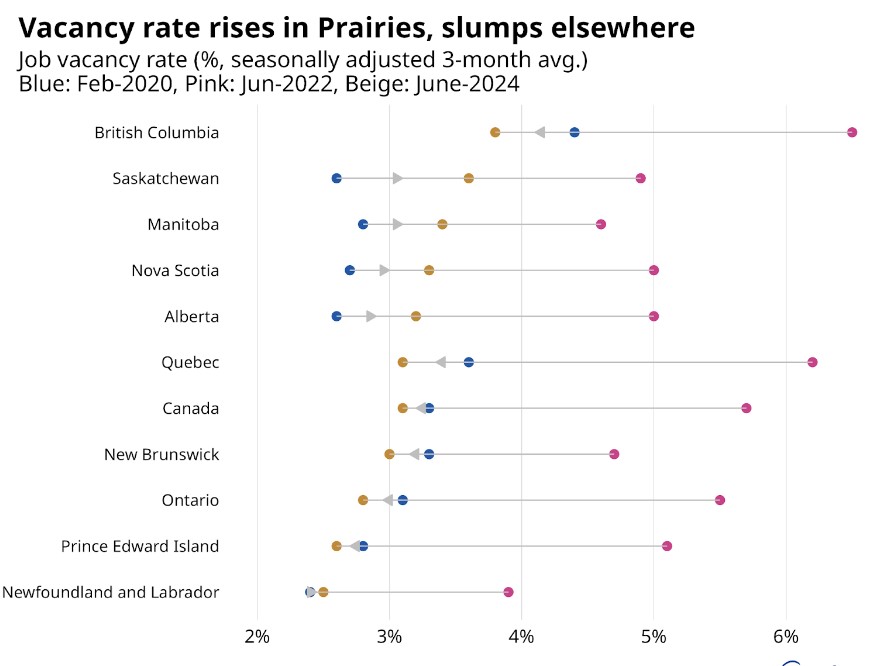'On average, the smaller the size of the labour market, the stronger job postings are compared to pre-pandemic levels'

Job vacancies in Canada fell by 59,000 (-9.2 per cent) to 582,600 in the second quarter of 2024, according to data from Statistics Canada (StatCan).
That marks the eighth consecutive quarterly decline from the record high of 983,600 reached in the second quarter of 2022.
The drop in the second quarter of 2024 was also about twice the decrease seen in the previous quarter (-30,200; -4.5 per cent).
On a year-over-year basis, job vacancies were down by 190,500 (-25.6%) in June. The job vacancy rate was holding at 3.1%, down from 4.2% in June of last year, signaling a bit of a cooldown in what used to be a red-hot job market, according to a previous report.
Job vacancies among industries, provinces
Among industries, sales and service occupations recorded the biggest drops in job vacancies.
“Job vacancies in sales and service occupations continued to decline, falling by 18,400 (-9.9 per cent) to 168,400 in the second quarter of 2024, the seventh consecutive quarterly decline,” said StatCan.
“Vacancies in sales and service occupations accounted for nearly 3 in 10 (28.9 per cent) vacancies in the second quarter, the largest share among all 10 broad occupational groups; they were little changed from the previous quarter (29.1 per cent), but were down 3.1 percentage points from the second quarter of 2023 (32.0 per cent).”
Source: Statistics Canada
Meanwhile, the industries with the biggest increases in job vacancies in the second quarter of 2024 recorded less than 1,000 such increases.
Source: Statistics Canada
“While job opportunities have been down nationwide since mid-2022, growth compared to pre-pandemic levels has been mixed across regions, showing two main patterns,” said Brendon Bernard, senior economist at the Indeed Hiring Lab.
“First, job vacancy rates in the Prairies are up, overtaking Ontario, Quebec, and most of Atlantic Canada, where they are down. Second, job postings on Indeed remain elevated in smaller cities and non-urban areas, while medium and larger metro areas are mixed, with substantial declines in several Ontario cities, Vancouver, and Montreal.”
Hiring appetite in the Prairies and Nova Scotia have exceeded other provinces, with job vacancies exceeding the national average, according to data from Indeed.
Source: Indeed
Overall, there has been an increase in job postings in less-populated areas compared with decreases in the bigger metropolitan areas.
“On average, the smaller the size of the labour market, the stronger job postings are compared to pre-pandemic levels,” says Bernard.
“Grouping census agglomerations (CAs) and rural areas, overall job postings in early September in these less-populated regions were up a solid 17 per cent from February 2020. In contrast, taking the Toronto, Montreal, and Vancouver areas together, postings in Canada’s three largest metros were down 19 per cent over the same period, while other metro areas had slipped just 1 per cent.”
Previously, StatCan released its Labour Force Survey for August, and the numbers showed an uptick in Canada's unemployment rate to 6.6%.




